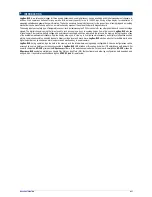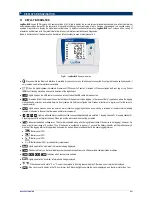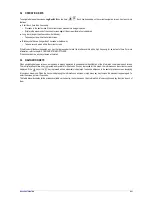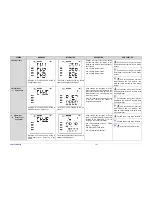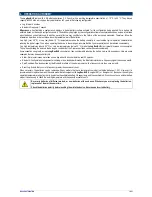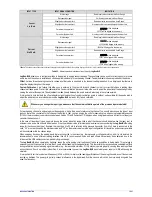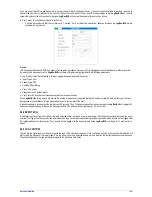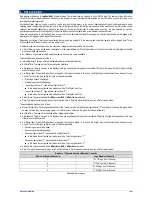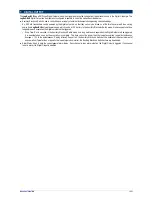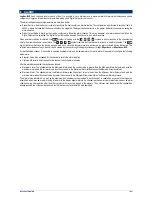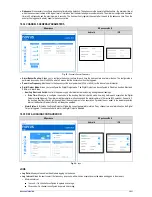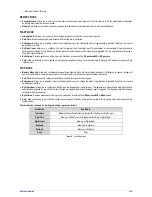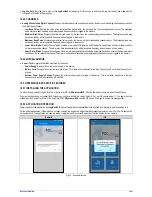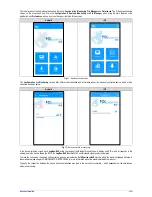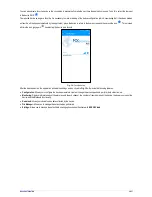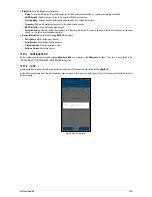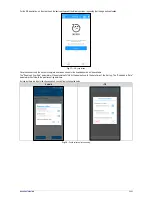
NOVUS AUTOMATION
18/57
8.
ALARMS
LogBox-BLE
has 4 channels, where in each of them it is possible to set a minimum
and a maximum alarm. Alarms are displayed and can be
configured to trigger an internal Buzzer for audible warning and a Digital Output for user control.
The alarm configuration general parameters are described below:
●
Buzzer Runtime: Sets the buzzer runtime for each time the device enters an alarm situation. The configuration is performed in seconds from 0 to
65000 s, where 0 means that the buzzer should not be triggered. The longer the buzzer runtime, the greater the battery consumption during the
alarm situation.
●
Digital Output Mode: A digital output can be configured to follow the alarm situation. This way, whenever an alarm situation is satisfied, the
Digital Output will be activated. The Digital Output will only be disabled if no channel is in an alarm condition.
When an alarm condition is satisfied, the
symbol is lit along with the ,
,
,
symbols, which correspond to the channels that
satisfy the alarm situation in current state. The ,
,
,
symbols indicate that the channel is currently in an alarm situation. The
symbol indicates that since the device was powered on or since the last alarm status was cleared, an alarm occurred during that period. The
retentive alarm statuses of each channel can be cleared by the user through the display screens or through
NXperience
or
NXperience-BLE
.
For each enabled channel, it is possible to enable a minimum alarm and a maximum alarm. For each alarm, it is possible to configure the following
parameters:
●
Setpoint: Value to be exceeded for the channel to satisfy the alarm situation.
●
Hysteresis: Barrier to be exceeded for the channel to exit the alarm situation.
After the alarms are enabled, they behave as follows:
●
Maximum Alarm: The channel enters the Maximum Alarm when the current value is greater than the Maximum Alarm Setpoint and exits the
maximum alarm when the current value is less than or equal to the Maximum Alarm setpoint minus the Maximum Alarm hysteresis.
●
Minimum Alarm: The channel enters the Minimum Alarm when the current value is lower than the Minimum Alarm Setpoint and exits the
minimum alarm when the current value is greater than or equal to the Minimum Alarm setpoint plus the Minimum Alarm hysteresis.
The alarm status information, as well as the maximum and minimum values reached in each channel, is updated by any events that trigger an
acquisition, which may be a read in the log interval or in the display update interval. If a channel reaches a minimum or maximum value or an alarm
condition during an acquisition other than the log interval, it may not be logged in the memory. Thus, statuses may indicate that the channel has
already reached one of these situations and the information is not available in a data download.

